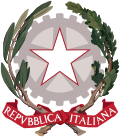Welcome to the Heraldry and Vexillology Portal!


Heraldry encompasses all of the duties of a herald, including the science and art of designing, displaying, describing and recording coats of arms and badges, as well as the formal ceremonies and laws that regulate the use and inheritance of arms. The origins of heraldry lie in the medieval need to distinguish participants in battles or jousts, whose faces were hidden by steel helmets.
Vexillology (from the Latin vexillum, a flag or banner) is the scholarly study of flags, including the creation and development of a body of knowledge about flags of all types, their forms and functions, and of scientific theories and principles based on that knowledge. Flags were originally used to assist military coordination on the battlefield, and have evolved into a general tool for signalling and identification, particularly identification of countries.
Selected biography

John Anstis (29 August 1669–4 March 1744) was an English officer of arms and antiquarian. He rose to the highest heraldic office in England and became Garter King of Arms in 1718 after years of plotting. Anstis was born at St Neot, Cornwall on 29 August 1669. He was the first son of another John Anstis and his wife Mary, the daughter of George Smith. Anstis matriculated at Exeter College, Oxford, on 27 March 1685 and entered the Middle Temple on 31 January 1690. On 23 June 1695 he married Elizabeth, daughter and heir of Richard Cudlipp of Tavistock, Devon. They had eight sons and six daughters. (more...)
Selected coat of arms

The emblem of Italy (Italian: emblema della Repubblica italiana) was adopted by the newly formed Italian Republic on 5 May 1948. Although often referred to as a coat of arms (or stemma in Italian), it is technically an emblem as it was not designed to conform to traditional heraldic rules. The emblem comprises a white five-pointed star, with a fine red border, superimposed upon a five-spoked cogwheel, standing between an olive branch to the dexter side and an oak branch to the sinister side; the branches are in turn bound together by a red ribbon with the inscription REPVBBLICA ITALIANA. The emblem is used extensively by the Italian government. The armorial bearings of the House of Savoy, blazoned gules a cross argent, were previously in use by the late Kingdom of Italy; the supporters, on either side a lion rampant Or, were replaced with fasci littori (literally bundles of the lictors) during the fascist era. (more...)
Selected flag

The national flag of the Philippines is a horizontal bicolor with equal bands of blue and red, and with a white equilateral triangle based at the hoist side; in the center of the triangle is a golden yellow sun with eight primary rays, each containing three individual rays; and at each corner of the triangle is a five-pointed golden yellow star. The flag is displayed with the blue field on top in times of peace, and with the red field on top in times of war. The design was conceptualized by Emilio Aguinaldo during his exile in Hong Kong in 1897, and formally adopted in 1898. The flag's colors have varying symbolism, and the shade of blue has changed over time. (more...)
Selected picture

The Hyghalmen Roll was made in the late fifteenth century and illustrates the German practice of repeating themes from the arms in the crest.
Did you know...
- ...that, among the flags of Romania, the removal of the socialist coat of arms during the Romanian Revolution of 1989 gave rise to the phrase "the flag with the hole" (pictured)?
- ...that King Edward III of England ordered stars effaced from the coat of arms of Sir Amery of Pavy for trying to sell Calais, a seaport of which he was the governor, to the French?
- ...that the cross in the coat of arms of Colchester represents the True Cross, as discovered by Saint Helena of Constantinople, the patron saint?
- ...that from 1850 until 1872, the Party Processions Act made it illegal to parade with music, flags or banners in Ireland?
- ...that the flag on the top of the Tall Hermann tower on Toompea Hill is one of the best-known symbols in Estonia of the government in power?
Related portals
Major topics and navigation
|
|
|
Heraldry Web resources
Authorities
- Belgium - The Council of Nobility, Flemish Heraldic Council and Council of Heraldry and Vexillology of the French Community
- Canada - Canadian Heraldic Authority and see also Public Register of Arms, Flags and Badges
- England, Wales, and Northern Ireland - The College of Arms
- Ireland - The Office of the Chief Herald of Ireland
- Netherlands - High Council of Nobility
- Portugal - Instituto da Nobreza Portuguesa
- Scotland - The Court of the Lord Lyon
- South Africa - South African Bureau of Heraldry
- Sweden - National Board of Heraldry, The National Archive
- United States Army - The United States Army Institute of Heraldry
Societies
- Greek Heraldry Society
- The Academy of Heraldic Science Czech republic
- The American College of Heraldry
- The American Heraldry Society
- The Augustan Society
- The Australian Heraldry Society Inc.
- Bulgarian Heraldry and Vexillology Society
- The Center for Research of Orthodox Monarchism
- Cambridge University Heraldic and Genealogical Society
- Chiltern Heraldry Group
- The College of Dracology
- Croatian Heraldic and Vexillologic Association
- The Finnish Heraldic Society
- Fryske Rie foar Heraldyk
- Hellenic Armigers Society
- Guild of Heraldic Artists
- Genealogical Society of Ireland
- Heraldry Research Institute (Japan)
- The Heraldry Society
- The Heraldry Society of Africa
- The Heraldry Society of New Zealand Inc.
- The Heraldry Society of Scotland
- The Heraldry Society of Southern Africa
- The Institute of Heraldic and Genealogical Studies
- The International Association of Amateur Heralds
- Italian Center of Vexillological Studies
- Lancashire Heraldry Group
- Macedonian Heraldry Society
- New England Historic Genealogical Society Committee on Heraldry
- Norwegian Heraldry Society
- Oxford University Heraldry Society
- Polish Heraldry Society
- Polish Nobility Confederation
- Real Academia Matritense de Heráldica y Genealogía - Royal Academy of Heraldry and Genealogy of Madrid
- Romanian Institute for Genealogy and Heraldry
- The Royal Heraldry Society of Canada
- The Russian College of HeraldryThe Russian College of Heraldry
- Serbian Heraldic Society
- Societas Heraldica Scandinavica
- Societas Heraldica Slovenica
- Swedish Heraldic Society
- Ukrainian Heraldry Society
- Royal Association Genealogical and Heraldic Office of Belgium
Vexillology
Software
- Coat of Arms Visual Designer web-based program
- Puncher Heraldry Program
- Blazonry Server - pyBlazon
- DrawShield - creates SVG shield or arms image from blazon
- CoaMaker - web-based tool
- Blazon95 and BLAZONS! 2000, older Windows applications
Texts
- Heraldry, historical and popular : with seven hundred illustrations (1863)
- A Complete Guide to Heraldry (1909)
Other
Wikimedia
The following Wikimedia Foundation sister projects provide more on this subject:
-
Commons
Free media repository -
Wikibooks
Free textbooks and manuals -
Wikidata
Free knowledge base -
Wikinews
Free-content news -
Wikiquote
Collection of quotations -
Wikisource
Free-content library -
Wikispecies
Directory of species -
Wikiversity
Free learning tools -
Wikivoyage
Free travel guide -
Wiktionary
Dictionary and thesaurus











